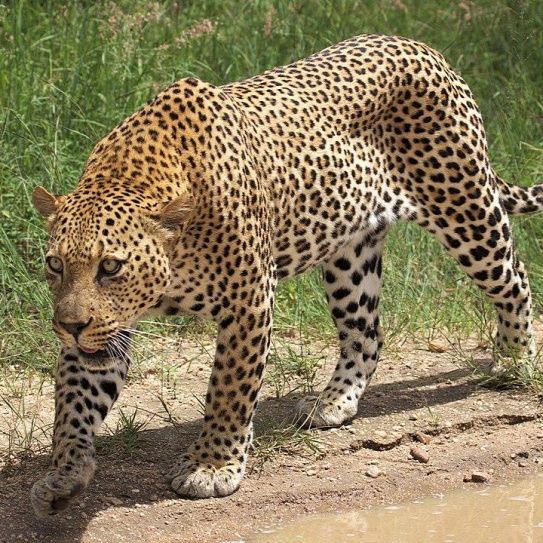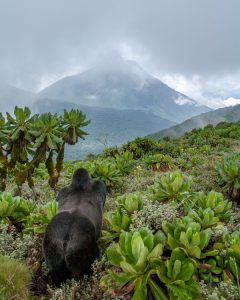Akagera National Park, located in eastern Rwanda, is a true wildlife haven and one of the few places in the country where visitors can witness the Big Five in their natural habitat. Among these majestic creatures, leopards (Panthera pardus) stand out as the most elusive and mysterious. Shy, solitary, and nocturnal, leopards are often difficult to spot — but tracking them in Akagera is one of the most thrilling wildlife experiences in East Africa. Leopards in Akagera National Park
In this blog post, we delve into everything you need to know about leopards in Akagera: their habitat, behavior, the best time and spots to find them, and how to increase your chances of an unforgettable sighting.
What Makes Akagera Ideal for Leopards?
Akagera National Park boasts a rich diversity of habitats — from savannahs and rolling hills to woodlands and wetlands. This diverse landscape creates ideal conditions for leopards, who prefer areas where they can remain hidden, hunt efficiently, and avoid larger predators.
Leopards in Akagera thrive in:
- Thick woodlands and bushy savannahs for cover
- Rocky outcrops and ridges for denning and observation
- Proximity to prey such as impala, bushbuck, monkeys, and small mammals
Unlike lions, which favor open plains and group hunting, leopards rely on stealth, solitude, and ambush tactics — all of which are well-supported in Akagera’s varied terrain.
Are Leopards Common in Akagera National Park?
Leopards are present and breeding in Akagera, but they remain elusive. Unlike lions and elephants, which are easier to spot due to their size and behavior, leopards are primarily nocturnal and secretive, making daytime sightings rarer.
However, their population has been steadily increasing since the reintroduction of other carnivores and improved park management under the African Parks network. With proper conservation efforts, Akagera now supports a healthy population of leopards, although precise numbers are hard to determine due to their elusive nature. Leopards in Akagera National Park
Where in Akagera Can You Find Leopards?
While leopards can theoretically be seen throughout the park, some areas provide better chances for sightings:
- Southern Sector: Especially around the Kilala Plains, Mutumba Hills, and the forested areas near Lake Ihema.
- Northern Sector: Around Nyungwe Gate and towards the flatter plains where prey is abundant.
- Along riverine forests and marshy edges: These offer great hunting grounds and hiding spots for leopards.
Guides often use fresh tracks, claw marks on trees, and alarm calls from prey species (like baboons or impalas) to locate nearby leopards.
What Time of Day Is Best for Leopard Sightings?
Leopards are most active at night and during the cooler parts of the day — dawn and dusk. Therefore, the best time to spot leopards in Akagera is:
- Early morning game drives (5:30–8:00 a.m.)
- Late afternoon drives (4:00–6:30 p.m.)
- Nocturnal game drives, which the park offers as guided night safaris
Night drives give visitors a higher chance of encountering leopards when they are hunting or moving stealthily through the bush.
What Behavior Should You Watch For?
If you’re lucky enough to spot a leopard in Akagera, here are some fascinating behaviors to observe:
- Tree lounging: Leopards often rest in trees during the day, using the branches to stay cool and safe from larger predators.
- Stealth movement: Watch their calculated steps as they stalk prey or move through grass unnoticed.
- Hunting tactics: If you’re incredibly lucky, you may witness a leopard ambush — quick, silent, and precise.
- Carrying prey into trees: Leopards drag their kills up into trees to avoid scavengers like hyenas or lions.
What Can You Do to Increase Your Chances of Seeing a Leopard?
Seeing a leopard takes patience, skill, and a bit of luck. Here’s how to improve your odds:
- Hire an experienced guide: Local guides know the leopard territories and signs.
- Join a night drive: Your best chance for sightings, as leopards are nocturnal.
- Stay multiple days: The longer you stay, the higher your chances.
- Be alert: Keep your eyes on trees, riverbanks, and shaded bushes.
- Look for signs: Fresh tracks, scratch marks, and the alarm calls of other animals are great indicators.
How Are Leopards Protected in Akagera?
Akagera’s leopard population benefits from robust conservation management led by African Parks in partnership with Rwanda Development Board. Anti-poaching units, community engagement programs, and habitat preservation initiatives have all played critical roles in protecting leopards and other carnivores.
Additionally, ecotourism contributes directly to conservation — every permit and safari supports the park’s operations and community livelihoods.
Can You Photograph Leopards in Akagera?
Yes, and it’s an amazing opportunity — but it takes timing and readiness. For the best leopard photography:
- Use a telephoto lens (200mm or more)
- Opt for early morning light or golden hour shots
- Use a bean bag or monopod for stability in vehicles
- Set your camera to silent mode to avoid scaring the animal
- Respect distance and never use flash
Akagera’s natural backdrops — acacia trees, golden grasslands, or misty woodlands — create the perfect canvas for leopard photography.
What Makes Akagera Different from Other Leopard Safari Destinations?
While parks like Serengeti and Kruger are famous for leopard sightings, Akagera offers something special:
- Intimate experience: Fewer tourists mean less crowding and more peaceful sightings
- Unique habitats: Leopards here move between wetlands, forests, and open plains
- Conservation story: The park’s comeback story enhances the value of every wildlife sighting
If you’re after something wild, raw, and personal — Akagera is the perfect leopard-spotting destination.
Why You Should Seek Leopards in Akagera
Leopards are a symbol of wilderness and mystery, and spotting one is a highlight of any safari. In Akagera National Park, the challenge of seeing these majestic cats only adds to the reward.
Whether you catch a glimpse of a leopard in the early morning light or see one slinking through the grass during a night drive, the memory will stay with you forever. Add Akagera to your Rwandan safari itinerary — and with patience, you may just encounter one of Africa’s most iconic predators. Leopards in Akagera National Park




